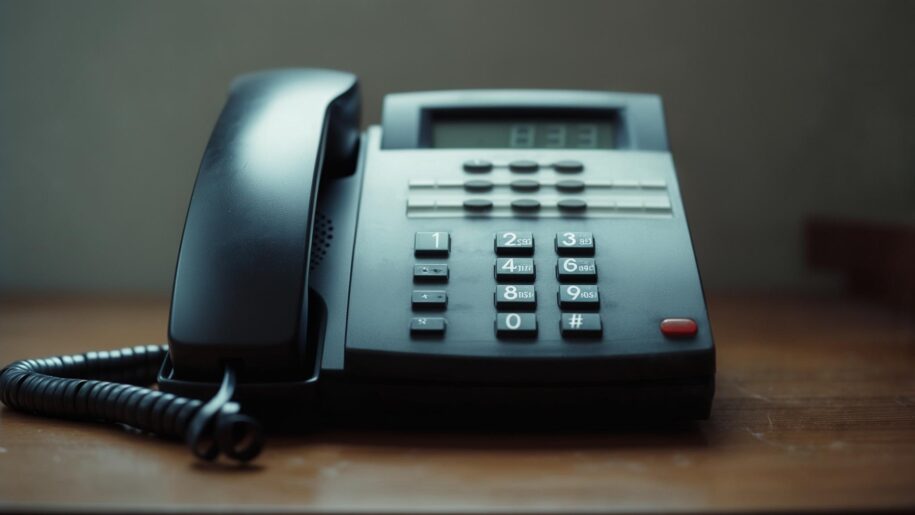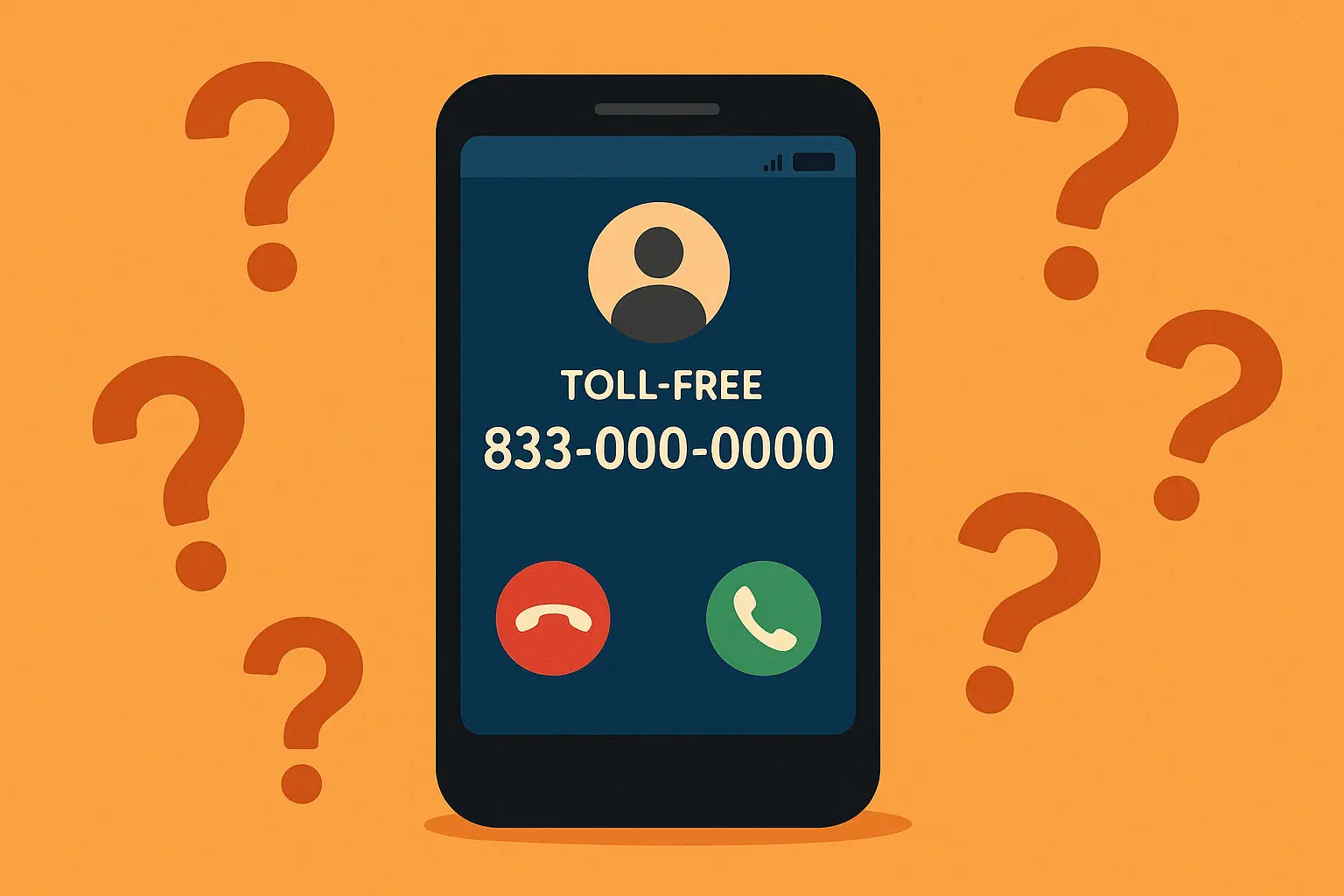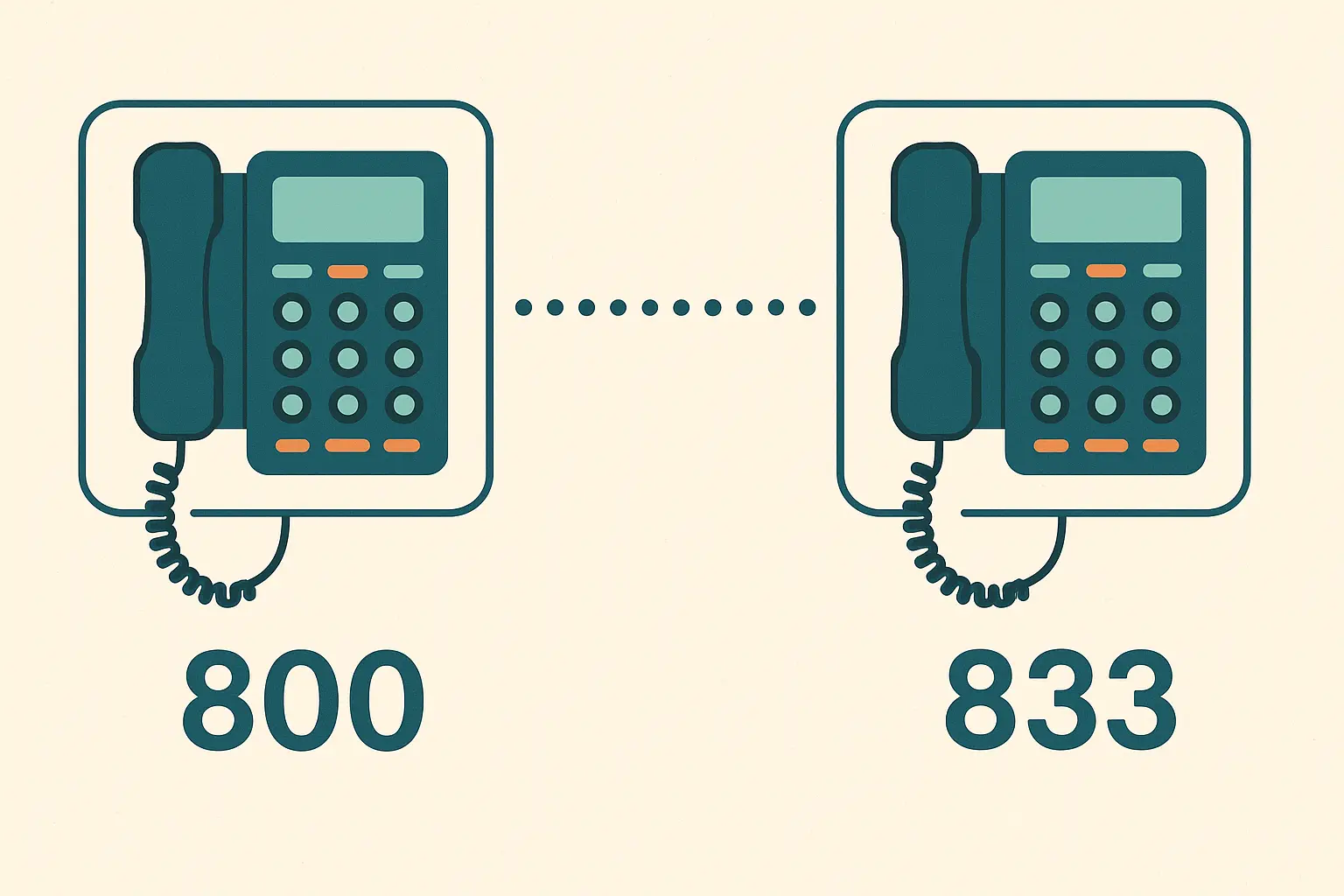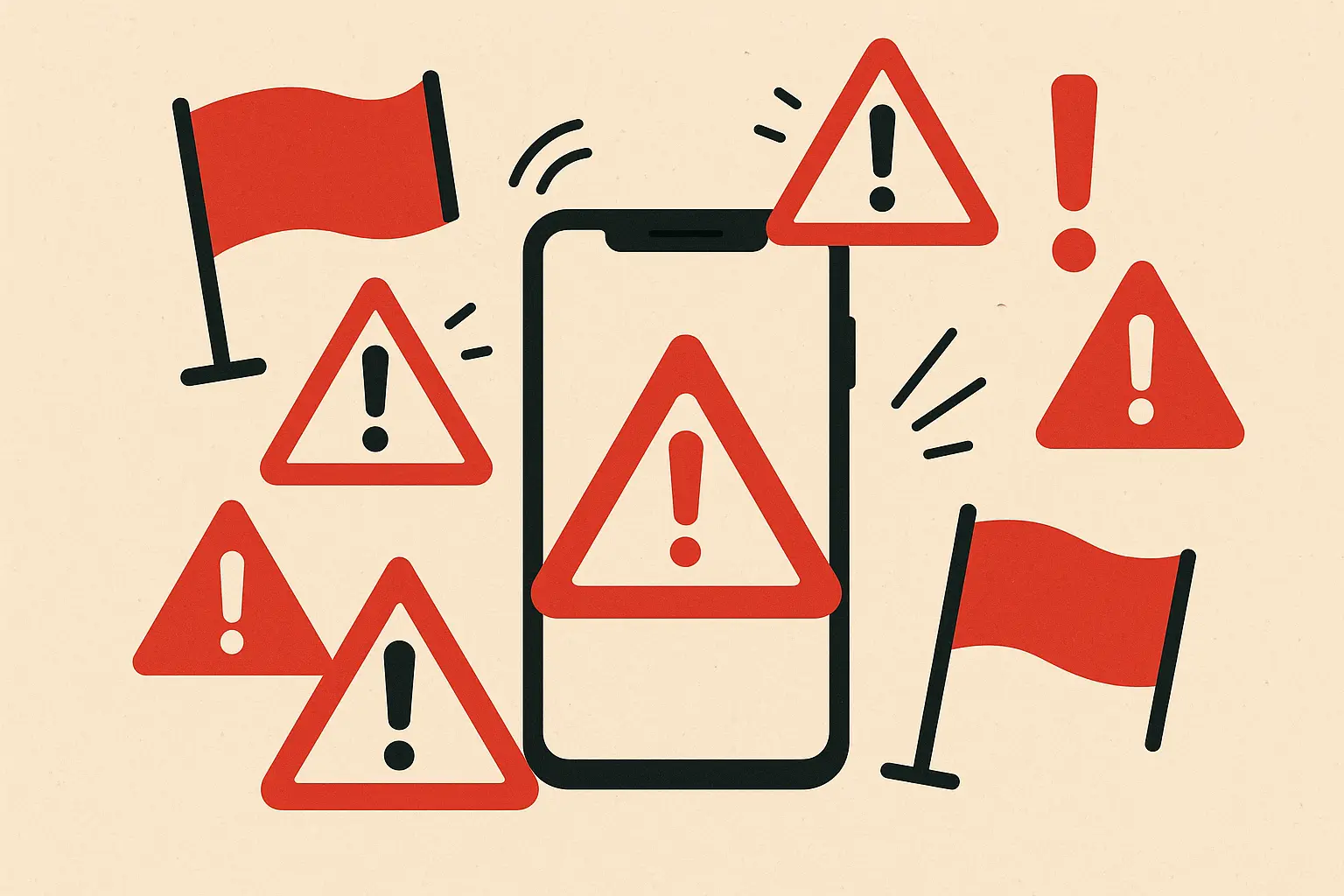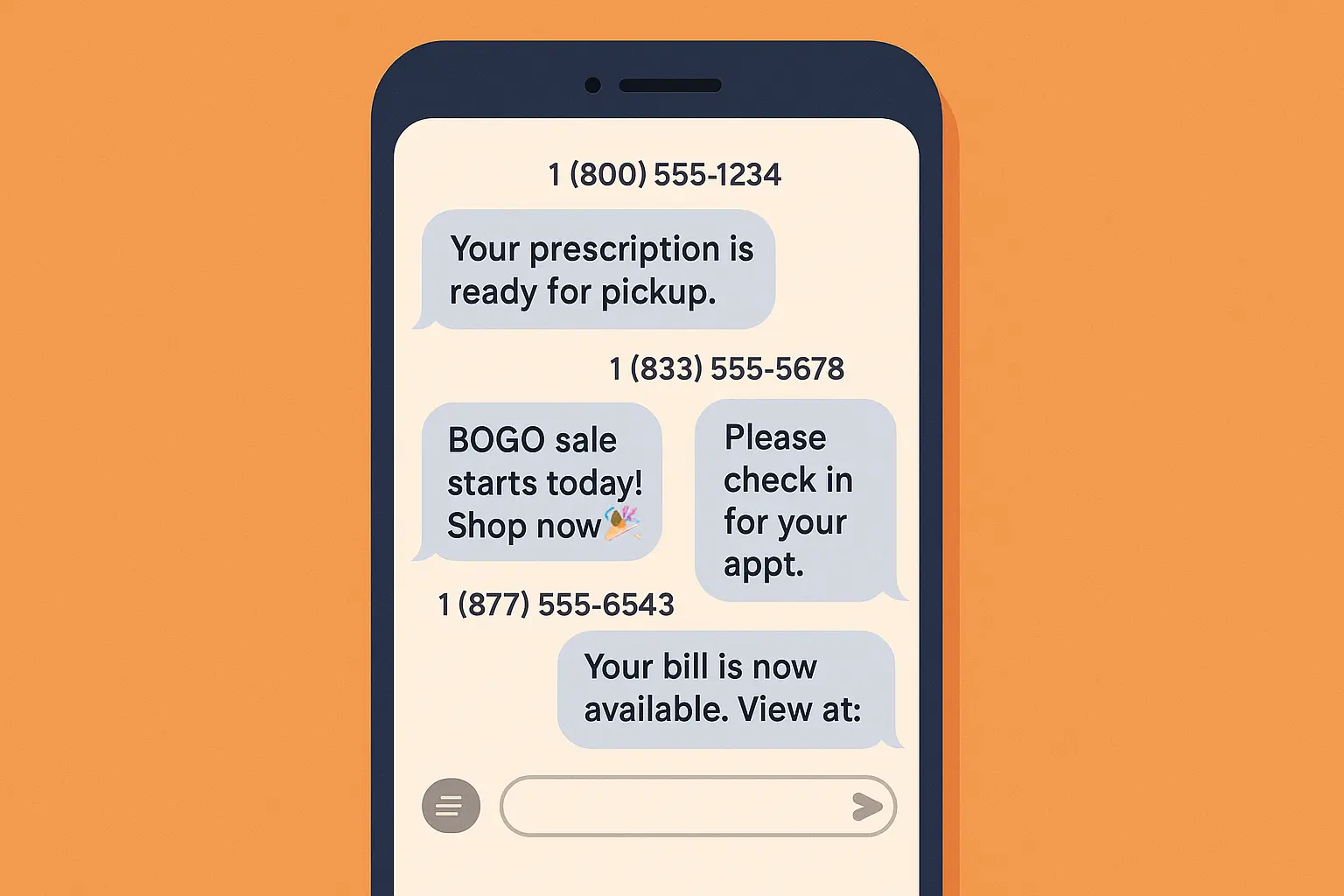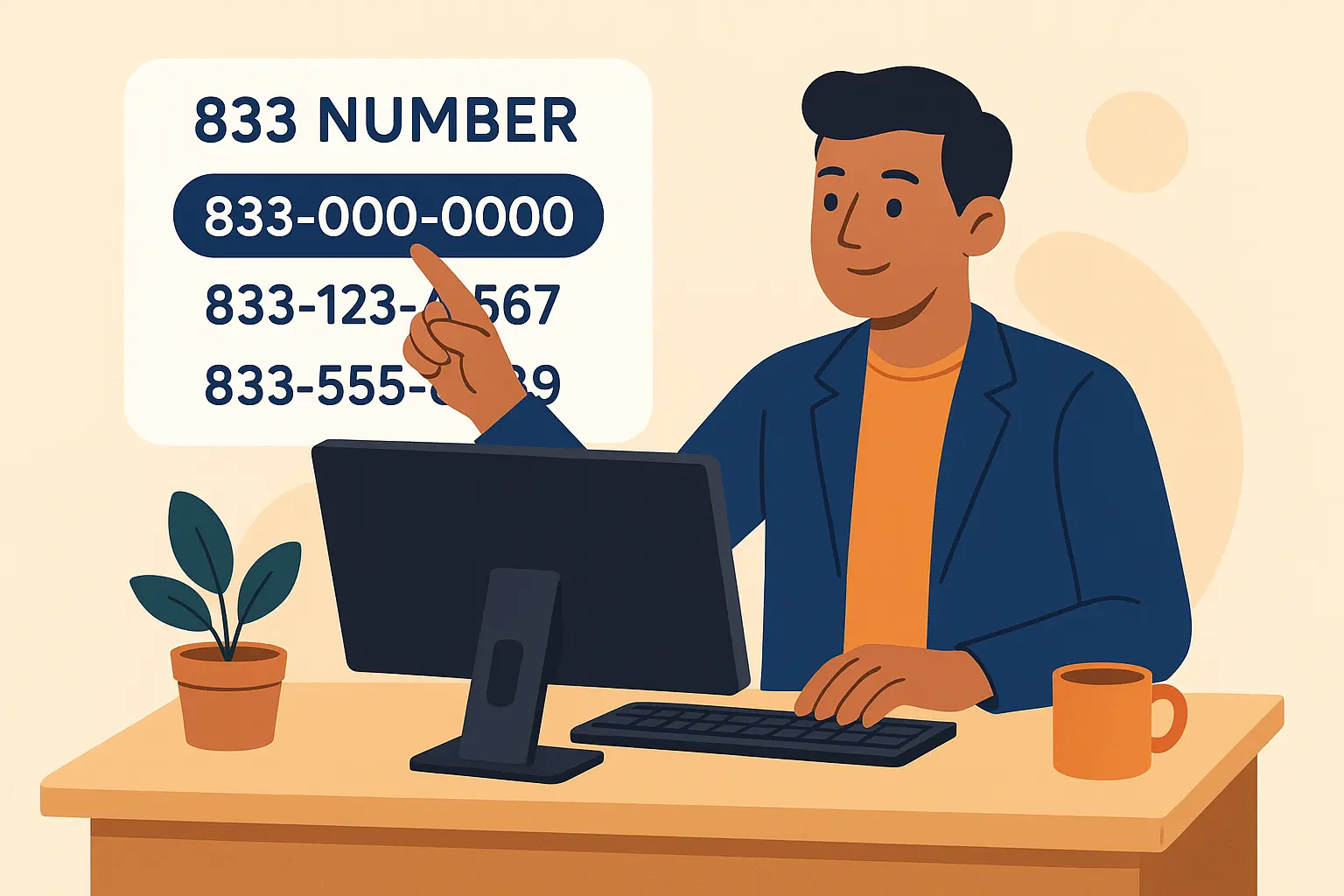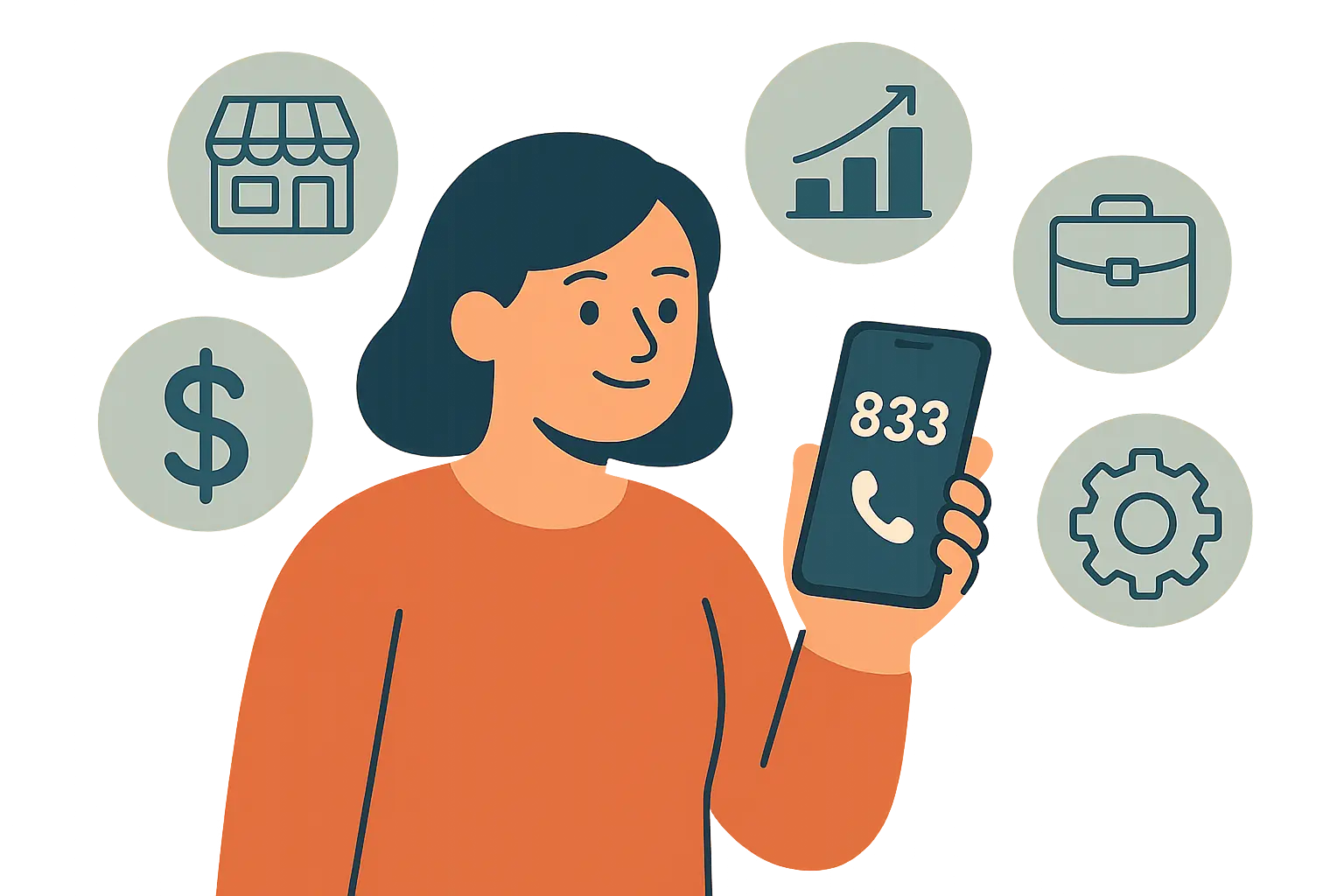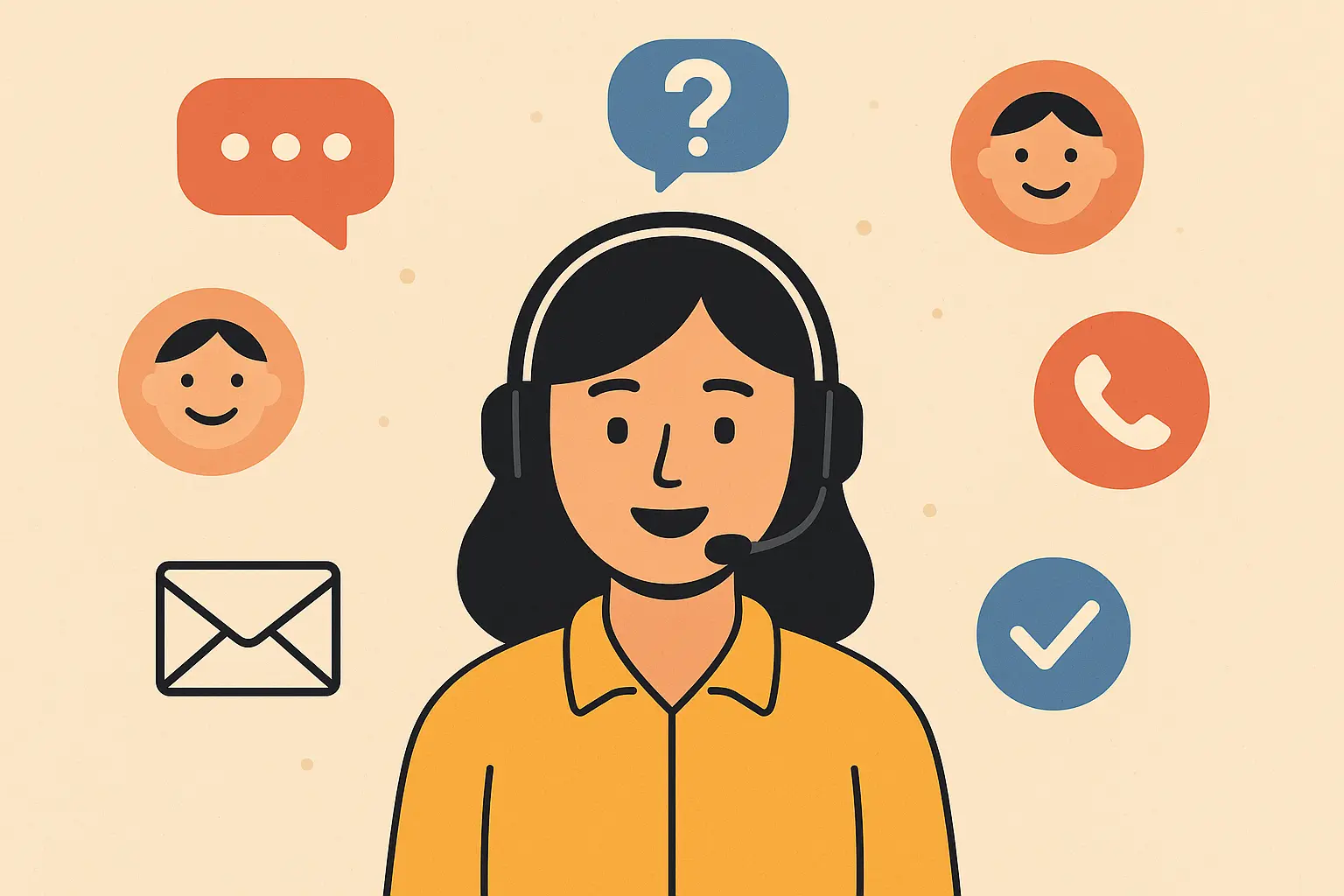Got a call from an 833 number? You’re probably wondering if it’s legit or just another scammer trying to steal your info. Here’s what you need to know.
Table of Contents
Table of Contents
-
The Bottom Line Up Front
-
What Exactly Is an 833 Number?
-
The Scammer Problem (Let’s Talk About It)
-
Business Text Messages from 833 Numbers
-
Should Your Business Get an 833 Number?
-
Location Confusion (And Why It Matters)
-
Text Message Management
TL;DR
-
833 numbers are real toll-free numbers that work exactly like 800 numbers – the business pays, you don’t
-
Scammers love using them because they look professional and trustworthy, so always verify before sharing personal info
-
These numbers work nationwide and don’t reveal the caller’s location (unlike regular area codes)
-
Businesses increasingly use 833 for both calls and text messaging campaigns
-
Never give out personal information on unsolicited calls from any toll-free number
-
Always verify through official company websites or phone numbers before trusting any 833 caller
The Bottom Line Up Front
833 numbers are real toll-free numbers that work exactly like 800 numbers – the business pays, you don’t. But here’s the catch: scammers love using them because they look professional and trustworthy. So yes, they’re legitimate, but that doesn’t mean every call is safe.
Look, I get a lot of questions about 833 numbers, and the confusion is totally understandable. We’re conditioned to think area codes tell us something about location or legitimacy, but 833 operates in a completely different world.
What Exactly Is an 833 Number?
Think of 833 as the newer cousin of 800 numbers. When businesses started running out of memorable 800 combinations back in 2017, the phone companies introduced 833 as a backup. Same rules, same functionality, just different digits.
Here’s how toll-free numbers have expanded over the years:
|
Toll-Free Prefix |
Year Introduced |
Status |
|---|---|---|
|
800 |
1967 |
The original, mostly taken |
|
888 |
1996 |
High demand |
|
877 |
1998 |
High demand |
|
866 |
2000 |
High demand |
|
855 |
2010 |
Active |
|
844 |
2013 |
Active |
|
833 |
2017 |
The newest addition |
Unlike regular area codes that tell you where someone’s calling from (like 212 for New York), 833 numbers don’t reveal location. The caller could be next door or across the country – you have no way to know.
How These Numbers Actually Work
When you dial an 833 number, you’re triggering a sophisticated routing system. Your call doesn’t go directly to the business – instead, it travels through a toll-free database that figures out where the call should actually ring based on the specific number you dialed, your location, and the business’s preferences.
This happens in milliseconds, but it means that single 833 number might ring at a New York office during business hours, then automatically route to a California call center for West Coast coverage. Pretty clever, right?
The business receiving the call pays for everything – connection fees, long-distance charges, the works. That’s why they’re called “toll-free” – there’s no toll for you, but somebody’s definitely paying.
Coverage That Actually Makes Sense
833 numbers work everywhere across the North American Numbering Plan. Whether you’re calling from New York, Los Angeles, Toronto, or anywhere in between, you can reach any 833 number without special dialing or extra charges.
This continental coverage creates opportunities that regular phone numbers can’t match. A business can have one 833 customer service line that serves customers across multiple countries and time zones without maintaining separate phone systems everywhere.
The Scammer Problem (Let’s Talk About It)
Here’s what nobody wants to admit: criminals figured out that toll-free numbers make people drop their guard. When you see an 833 number, your brain thinks “legitimate business,” which is exactly what scammers are counting on.
According to “Scammers still prefer the phone” CBS12, Amy Nofziger, Director of Fraud Victim Support with AARP, warns that “Certainly, anytime you receive a phone call from an unknown number, it might be a criminal trying to steal from you.” This is especially true for 833 numbers since scammers exploit their trustworthy appearance.
The sophistication level is honestly scary. These aren’t amateur operations – criminals invest in professional phone systems, train their operators to sound legitimate, and research their targets extensively before making contact.
Red Flags That Scream “Hang Up Now”
-
Pressure tactics: “You must act within the next 10 minutes or your account will be closed”
-
Fishing for info: Asking for your Social Security number, passwords, or bank details
-
Threats: “Legal action will be taken,” “Your credit will be destroyed”
-
Payment demands: Wanting gift cards, wire transfers, or immediate payments
-
Won’t let you verify: Refusing to give you time to call them back or getting angry when you ask questions
How to Actually Protect Yourself
Never give personal information on unsolicited calls. Period. Even if they sound official, know some of your details, or claim there’s an emergency with your account.
Your verification game plan:
-
End the call politely (“Let me call you back”)
-
Look up the company’s official number (not the one they gave you)
-
Call them back using that verified number
-
Google the 833 number for scam reports
-
Check the Better Business Bureau if it’s a business claim
-
Use reverse phone lookup tools like Truecaller or Whitepages
-
When in doubt, don’t engage
Real companies understand when you want to verify. They’ll often encourage it. Scammers get angry and pushy when you don’t immediately comply.
Common 833 Scams to Watch For
Fake tech support: “Your computer has viruses, let us remote in and fix it for $300.” They’ll guide you through downloading software that gives them access to everything on your computer.
Prize scams: “You’ve won $10,000! Just pay the $500 processing fee first.” Spoiler alert: there’s no prize.
Debt collection: “Pay this fake debt immediately or face arrest.” Real debt collectors follow strict legal procedures and don’t threaten arrest over the phone.
Bank impersonation: “We need to verify your account info to prevent closure.” Your real bank already has your information and won’t ask for it over unsolicited calls.
The psychological manipulation in these scams is particularly sophisticated. They create artificial urgency, reference real companies you do business with, and use official-sounding language to bypass your natural skepticism.
Business Text Messages from 833 Numbers
Companies aren’t just using 833 for calls anymore – they’re texting too. You might get appointment reminders, delivery updates, or marketing messages from these numbers, and honestly, it’s pretty convenient when done right.
The technical capabilities that make this possible are actually impressive. Unlike regular phone numbers that were designed primarily for voice calls, 833 numbers can seamlessly handle both voice and text communications through the same number.
Understanding how to properly format and forward text messages to an email address becomes crucial when managing business communications from 833 numbers, ensuring you never miss important customer inquiries.
Legitimate vs. Sketchy Business Texts
Legitimate business texts usually:
-
Include the company name clearly
-
Have an opt-out option (like “Reply STOP to unsubscribe”)
-
Don’t ask for personal info via text
-
Match communications you’d expect from that business
-
Come at reasonable hours
Sketchy texts often:
-
Come from businesses you’ve never heard of
-
Ask you to click suspicious shortened links
-
Want you to reply with personal information
-
Threaten immediate account closure or legal action
-
Arrive at weird hours or with poor grammar
How Businesses Actually Use 833 for Texting
Modern companies have discovered that 833 numbers work brilliantly for text messaging campaigns. The response rates consistently outperform regular phone numbers because recipients perceive them as more trustworthy and professional.
Appointment-based businesses have found particular success here. Medical offices, salons, and service providers report significant reductions in no-shows when they send appointment confirmations via text from their 833 numbers rather than making phone calls or sending emails.
For businesses managing high volumes of customer communications, learning how to forward text messages to a Slack channel can streamline team collaboration when handling inquiries from 833 numbers.
Should Your Business Get an 833 Number?
Maybe. It depends on your situation and budget, but let’s be honest about what you’re getting into.
An 833 phone number typically costs between $10 and $25 per month, depending on the service provider, according to Omnivoice. Some providers like Omnivoice offer plans starting at $9/month per user and include two telephone numbers – local or toll-free – making it possible to get a toll-free line at no extra cost.
But that’s just the basic cost. Want something memorable like 833-FLOWERS? That’ll cost you $50-200+ monthly. Premium numbers with repeating digits (833-777-7777) can be even pricier.
The Real Cost Breakdown
|
Number Type |
Example |
Memorability |
Cost Range |
|---|---|---|---|
|
Sequential |
833-123-4567 |
Low |
$10-15/month |
|
Repeating |
833-777-7777 |
High |
$50-200/month |
|
Vanity Word |
833-FLOWERS |
Very High |
$25-100/month |
|
Partial Vanity |
833-BUY-2024 |
Medium |
$15-40/month |
You Probably Want One If:
-
Customer service is central to your business model
-
You want to remove cost barriers for customer calls
-
You’re running marketing campaigns where people need to call you
-
You want to appear more established and professional
-
You serve customers across multiple states or countries
Skip It If:
-
You’re bootstrapping and every dollar counts
-
Most customer interaction happens online or via email
-
You already have a memorable local number that works well
-
Your target customers prefer text/email over phone calls
-
You’re just starting out and aren’t sure about your communication needs yet
Getting Set Up (The Real Process)
The process is more straightforward than most people expect: pick your provider, choose your number, set up call forwarding. The tricky part is configuration – you can route calls to different locations based on time of day, caller location, or business needs.
Pro tip: Start simple. You can always add fancy routing later as your business grows. Don’t overcomplicate things from day one.
A restaurant chain might choose 1-833-PIZZA-NOW for easy customer ordering. They’d configure it to ring their main location during business hours, route to their answering service after hours, and forward to individual franchise locations based on the caller’s area code for local delivery coordination.
When setting up your business communications system, understanding how to enter a phone number in international format ensures your 833 number works seamlessly with global customers and international business partners.
Compliance Stuff You Actually Need to Know
FCC regulations govern toll-free number usage, and maintaining compliance protects your investment from unauthorized transfers or regulatory penalties. The registration process establishes your legal ownership of the number and prevents competitors or scammers from hijacking your business communications.
This isn’t just bureaucratic nonsense – it’s legal protection. Record-keeping obligations include maintaining accurate contact information, usage records, and payment histories. These requirements might seem burdensome, but they provide legal protection if disputes arise about number ownership.
Location Confusion (And Why It Matters)
This trips everyone up: 833 numbers don’t tell you where the caller is located. Your brain expects area codes to mean something geographic, but toll-free numbers work differently.
People constantly search for “where is area code
People constantly search for “where is area code 833” or “833 area code location” because traditional area codes have trained us to associate phone numbers with specific places. When someone sees 212, they think New York. When they see 310, they think Los Angeles.
But 833 numbers exist in a virtual space that spans the entire North American Numbering Plan without being tied to any specific physical location. The caller could be next door or across the country – you have no way to know.
Understanding geographic misconceptions becomes clearer when you compare 833 numbers to traditional regional codes like the 310 area code business impact in Los Angeles, which demonstrates how location-based area codes function differently from toll-free numbers.
Why This Matters for Your Safety
You can’t verify a caller’s legitimacy based on their area code. That professional-sounding “local” business might actually be calling from a scam center thousands of miles away.
Location-based assumptions can be particularly dangerous with toll-free numbers because they create false confidence in caller legitimacy. Traditional verification methods that rely on geographic assumptions become ineffective and potentially dangerous.
When you receive calls from 1-833 area code numbers, focus on verifying the caller’s identity through official business channels rather than making assumptions based on the area code. The professional appearance of toll-free numbers requires more rigorous verification, not less.
Text Message Management
If you’re getting lots of texts from 833 numbers (especially if you run a business), organization becomes crucial. The volume can quickly become overwhelming without proper systems in place.
Smart Filtering Ideas That Actually Work
Set up filters to prioritize urgent messages and route routine stuff to appropriate team members:
-
Route messages with “urgent” or “emergency” to immediate notifications
-
Send sales inquiries to your sales team automatically
-
Direct support requests to customer service
-
Archive routine confirmations and receipts
-
Flag potential spam or scam messages for review
Advanced users can benefit from understanding how to forward text messages to an API URL endpoint to integrate 833 number communications with custom business applications and automated workflows.
Automated Responses That Don’t Suck
Setting up automated acknowledgment systems for 833 text messages improves response times and customer satisfaction without requiring constant human monitoring. The key is creating responses that provide actual value rather than generic acknowledgments that frustrate people.
Effective automated responses include estimated response times, alternative contact methods for urgent issues, and relevant information based on the customer’s inquiry. A well-designed system can resolve simple questions automatically while escalating complex issues to human representatives.
Managing text messages from 833 numbers can be challenging, especially when you’re dealing with important business communications or trying to stay organized across multiple devices. Auto Forward SMS solves this problem by automatically forwarding your 833 text messages to email or designated team members, ensuring you never miss critical communications.
The app’s advanced filtering capabilities let you set up specific rules for different 833 numbers – customer service inquiries can go to one email address while sales leads go to another. With keyword filtering, urgent messages containing words like “emergency” get priority routing while routine communications follow standard channels.
Auto Forward SMS’s reliable delivery system includes a 24-hour retry mechanism, so important messages from legitimate 833 numbers won’t disappear due to network issues. Ready to streamline your 833 communications? Try Auto Forward SMS today and take control of your business messaging.
Final Reality Check
833 numbers are tools – they’re not inherently good or bad. Legitimate businesses use them to provide better customer service and remove cost barriers for their customers. Scammers use them to appear trustworthy while stealing your money and personal information.
The key to navigating 833 communications successfully lies in understanding that these numbers operate completely differently from traditional area codes. They provide no geographic information, work identically to classic 800 numbers, and require independent verification before you trust them with personal information.
Your takeaway: Trust the verification process, not the area code. When someone calls from an 833 number asking for personal information or immediate action, your default response should be “Let me call you back” – then verify through official channels.
Whether you’re receiving calls from 833 numbers or considering getting one for your business, remember that the technology itself is neutral. The professional appearance of toll-free numbers should make you more cautious, not less. Real businesses will respect your need to verify and often encourage it. Scammers won’t.
The confusion around 833 numbers is understandable – we’re conditioned to associate area codes with specific locations and legitimacy levels. But in the world of toll-free communication, those traditional rules don’t apply. What matters is how you respond to these calls and texts, not where they appear to come from.
Stay smart, stay skeptical, and remember: if something feels off, it probably is. The few extra minutes you spend verifying an 833 caller could save you from financial loss, identity theft, or worse. In today’s world, a healthy dose of paranoia about unsolicited phone calls isn’t paranoia at all – it’s just good sense.
